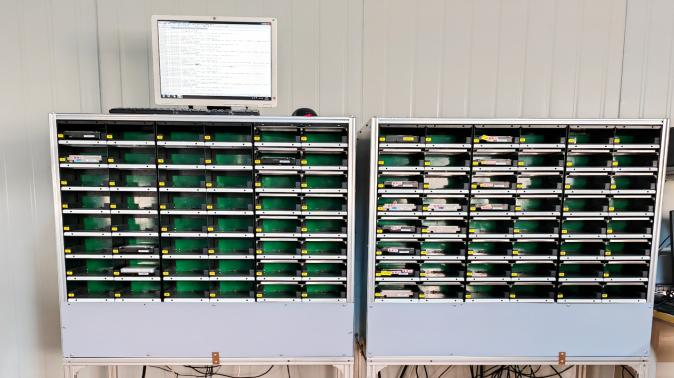Introduction to stadium LED display screens
Get ready to be dazzled! The world of sports has seen a remarkable transformation with the introduction of stadium LED display screens. These cutting-edge technological marvels have revolutionized the way we experience live games, bringing a whole new level of excitement and immersive entertainment to spectators. From enhancing viewing experiences to providing real-time updates and advertising opportunities, there's no doubt that stadium LED display screens are lighting up the game like never before. In this blog post, we'll explore all the advantages these dynamic displays offer for both fans and organizations alike. So sit back, relax, and prepare to be amazed by the power of stadium LED display screens!
The evolution of stadium displays
Stadium displays have come a long way since their humble beginnings. Gone are the days of simple scoreboards and static advertisements. The evolution of stadium displays has brought forth a new era of immersive experiences for spectators.
In the early days, stadiums relied on manual scoreboards operated by dedicated staff members. These scoreboards were limited in their capabilities and provided only basic information such as the score and time remaining in the game. However, advancements in technology led to the introduction of video screens that could provide more detailed information and even replay key moments from the game.
As technology continued to advance, stadium displays became larger, brighter, and more vibrant. LED screens revolutionized the industry with their ability to display high-definition content with stunning clarity. This allowed fans to see every detail on screen, whether it was a close-up shot of a player making an incredible play or a slow-motion replay capturing all angles of an important moment.
With these advancements came interactive features that further enhanced the fan experience. Fans can now engage with games and contests displayed on screen, adding an element of excitement and competition during breaks in play.
Real-time updates and information have also become integral components of modern stadium displays. Whether it's live stats, player profiles, or social media feeds displaying fan reactions from around the world, these dynamic displays keep fans connected and engaged throughout every moment of the game.
But it's not just about enhancing spectator experiences – stadium LED display screens offer numerous benefits for teams and organizations as well. For starters, they provide increased revenue opportunities through advertising partnerships with businesses looking to reach large audiences at sporting events.
Additionally, LED display screens offer customizable branding options for teams to showcase their logos, colors, and sponsors' messages prominently throughout games or events held at their venues.
Furthermore leading-edge technology allows these screens to be versatile enough for different types of events beyond sports matches including concerts festivals trade shows conferences graduations ceremonies political rallies charity runs marathons etc.
Environmental benefits of LED technology
LED technology has revolutionized the way we light up our stadiums, and with it comes a host of environmental benefits. One major advantage is energy efficiency. LED display screens consume significantly less electricity compared to traditional lighting systems, reducing both the demand on power grids and greenhouse gas emissions.
Additionally, LED displays have a longer lifespan than conventional lights, meaning fewer replacements are required over time. This not only reduces waste but also decreases the carbon footprint associated with manufacturing and disposing of old fixtures.
LEDs are free from toxic materials such as mercury, which can be found in older lighting technologies like fluorescent bulbs. This makes them safer for both human health and the environment if accidentally broken or improperly disposed of.
Furthermore, LEDs emit directional light that can be focused precisely where it's needed without any wasted spillage. This targeted illumination ensures optimal visibility for spectators while minimizing light pollution in surrounding areas.
By making the switch to stadium LED display screens, teams and organizations are taking a positive step towards reducing their ecological impact. The future looks bright as more sports venues embrace this sustainable technology to create an exciting game-day experience while preserving our planet for generations to come!
Cost-saving benefits of LED display screens
In addition to all the incredible advantages that stadium LED display screens bring to spectators and teams, there is another benefit worth mentioning - the cost-saving aspect. LED technology has revolutionized the way stadiums operate, making it more economical and sustainable in the long run.
LED displays consume significantly less energy compared to traditional lighting systems. They are designed with efficiency in mind, using only a fraction of the power required by older technologies. This translates into lower electricity bills for stadiums and organizations, helping them save resources and reduce their carbon footprint.
Furthermore, LED display screens have a longer lifespan than their predecessors. Traditional bulbs often require frequent replacements due to burnouts or malfunctions. On the other hand, LEDs can last up to 100,000 hours or more before needing replacement. This not only saves money on maintenance costs but also reduces waste as fewer materials end up in landfills.
Moreover, LED technology offers greater flexibility when it comes to controlling brightness levels. Unlike traditional lights that take time to warm-up or cool down before reaching optimal illumination levels, LEDs can instantly adjust brightness according to specific needs and environmental conditions. This means that stadiums can achieve optimal lighting while minimizing energy consumption at all times.
LED displays offer easier installation and maintenance processes compared to conventional lighting systems. With modular designs and lightweight components, they can be quickly assembled or disassembled as needed without causing significant disruptions during events or regular operations. Additionally, troubleshooting issues with individual modules is much simpler than replacing an entire fixture.
All these cost-saving benefits make stadium LED display screens a smart investment for both short-term gains and long-term sustainability goals. By reducing energy consumption, extending lifespan durability, providing adaptable brightness levels, and simplifying installation processes; organizations can enjoy significant financial savings over time while contributing positively towards the environment.
GALED
gary@szgaled.com


